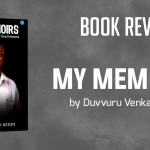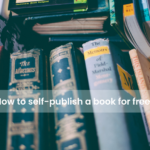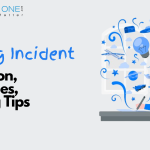In the vast and diverse realm of literature, a book’s title serves as more than just a label; it holds immense power as the gateway to the story within its pages. Like a key, the title unlocks the reader’s curiosity and sets the tone for the journey that awaits them. Crafting the ideal book title is an art that can profoundly impact a reader’s decision to pick up a book and embark on an unforgettable adventure through the author’s world of imagination.
Imagine walking into a vast library or scrolling through an online bookstore, surrounded by countless books, each vying for attention. Among this sea of literary offerings, a well-chosen title stands out like a shining beacon, beckoning readers to explore its contents. A captivating title is a compelling invitation that can determine whether a reader chooses to engage with a particular book or pass it by.
Read: Looking to publish a book in the UK? Here’s a complete guide for publishing in the UK.
The importance of a book title lies in its ability to encapsulate the essence of the story and evoke intrigue within a few well-crafted words. It is a snapshot of the narrative’s soul, revealing the book’s themes, emotions, and core message. A thoughtfully chosen title sets the stage, piquing the reader’s curiosity and leaving them eager to uncover the mysteries hidden within the pages.
Crafting the perfect book title involves a delicate balance between creativity, clarity, and impact. The process goes beyond mere wordplay; it is an intricate dance of language and emotion, designed to resonate with the target audience and leave a lasting impression. To achieve this, authors embark on a journey of exploration and contemplation, exploring various themes, concepts, and expressions that align with their story’s essence.
Here’s a list of steps that you should keep in mind before thinking or finalizing a book title:
Step 1: Decoding the Art of Book Titles
- Understanding the Impact of a Title The title of a book is not just a mere label; it holds the power to shape the reader’s perception and create a lasting impression. An impactful title can evoke curiosity, emotion, and intrigue, while a lacklustre title may fail to capture the reader’s attention. Understanding the importance of a well-chosen title is crucial for authors seeking to make a mark in the competitive literary world. Example: “The Catcher in the Rye” by J.D. Salinger The title of this classic novel immediately sparks curiosity and sets a mysterious tone. It invites readers to ponder the meaning behind the phrase “The Catcher in the Rye,” creating an emotional connection before they even open the book. The title’s ambiguity and allure contribute to its enduring appeal.
- The Power of Attention-Grabbing Titles: In a world filled with countless books vying for attention, an attention-grabbing title is the first step in capturing potential readers’ interest. A title that is simple, memorable, and relevant to the book’s content can significantly increase its chances of being picked up and explored further. Example: “Gone Girl” by Gillian Flynn The title “Gone Girl” immediately creates intrigue and raises questions in the reader’s mind. Who is the “Gone Girl”? What happened to her? The simplicity and mystery of the title compel readers to find out more about the story behind it.
- Avoiding Title Repetition: Originality is key to standing out in a sea of books, and avoiding title repetition is essential to ensuring that your book maintains its unique identity. Thorough research should be conducted to avoid using titles that have been used before or are too similar to other works, reducing the risk of confusion and establishing a distinct presence in the literary marketplace. Example: “The Hunger Games” by Suzanne Collins This wildly popular young adult dystopian novel introduced a fresh and captivating title that became synonymous with the series. The term “The Hunger Games” had not been widely used before, making it a unique and easily recognisable title that helped the book gain significant attention and popularity.
You may also like: The Rise of Self-Publishing and What it Means for AuthorsStep 2: The Science of Crafting the Perfect Title
- Ideal Title Length: The length of a book title is a critical aspect that can significantly impact its reception by both readers and the market. An ideal title should strike a balance between being concise and informative. Generally, titles that range from 7 to 10 words are considered effective. Shorter titles have the advantage of being more impactful, capturing the reader’s attention quickly. They are also easier to remember, making it more likely for readers to recall the book later. A concise title allows for a clear and straightforward representation of the book’s content and theme. Example: “To Kill a Mockingbird” by Harper Lee This classic title is a perfect example of an ideal length. With just four words, “To Kill a Mockingbird” encapsulates the central theme and sets the tone for the entire novel. The title is memorable, creating a lasting impression on readers and drawing them into the story.
- The Art of Summarization: A successful book title serves as a concise summary of the story, effectively evoking emotions and curiosity in potential readers. Authors must carefully choose words that reflect the central themes and emotions woven into their narrative. A strong title should spark interest and entice readers to explore the book further. Example: “The Da Vinci Code” by Dan Brown In just four words, “The Da Vinci Code” captures the essence of the thrilling mystery that unfolds within the pages of the novel. The title hints at the book’s exploration of art, history, and hidden secrets, leaving readers eager to unravel the enigmatic tale.
- Timing and Perspective: Selecting a book title can be a dynamic process that evolves at different stages of the writing journey. Authors may have an initial idea before they start writing, but as the story develops, new insights and perspectives may emerge, leading to potential title changes. After completing the novel, authors gain a broader understanding of the emotions and themes conveyed throughout the writing process, which enables them to finalise the perfect title that truly represents the essence of their work. Example: “The Great Gatsby” by F. Scott Fitzgerald F. Scott Fitzgerald initially considered several titles for his novel, including “Trimalchio in West Egg” and “Among Ash-Heaps and Millionaires.” However, after completing the book, he settled on “The Great Gatsby,” which effectively captures the grandeur and tragedy of the titular character’s life.
- Making It Meaningful: Meaningful book titles resonate with the story’s content and leave a lasting impression on readers. Authors can draw inspiration from prominent phrases, defining character traits, or significant events within the book. Example: “Pride and Prejudice” by Jane Austen “Pride and Prejudice” beautifully summarises the central themes of Jane Austen’s novel—the exploration of pride and misconceptions that shape the characters’ lives and relationships. The title reflects the heart of the story and entices readers to delve into the complexities of human nature.
- Adding Credibility and Appeal To enhance the credibility of a book title, authors can incorporate numbers or statistics that promise valuable insights for the reader. Additionally, a short title with a descriptive subtitle can effectively convey the book’s message while providing a catchy and memorable combination. Example: “The 7 Habits of Highly Effective People” by Stephen Covey This best-selling self-help book employs the number “7” in its title to indicate a clear and structured approach to achieving success. The title adds credibility to the author’s expertise and appeals to readers seeking practical guidance for personal development.
- Rememberability and Resonance: To ensure a title lingers in the reader’s mind, authors can use popular phrases, alliteration, or relevant slang that resonates with the target audience. A memorable title fosters a stronger connection between the book and its readers, encouraging further engagement. Example: “Harry Potter and the Sorcerer’s Stone” by J.K. Rowling The alliteration in the title “Harry Potter and the Sorcerer’s Stone” adds a lyrical quality to the name and makes it easier to remember. The magical and captivating title reflects the enchanting world of the story, leaving a lasting impression on readers of all ages.
You may also like: Ultimate Guide to Copy Editing: Tips, Techniques, and Tools
How long should a book title be?
The title of a book is an important factor from the sales perspective as well. You can form a brand name with your title by choosing some specific keywords. An ideal title should be 7-10 words long. It would be better to go with shorter titles as they catch on more attention and are easier to remember.
A title should be able to represent your book well, and essentially summarize your book in a few words.

What should my book title be?
Read: How should you market your first book?To sum it up, your title should be able to speak for your book and must be catchy enough to linger in the mind of your reader. You can publish your book with us on BlueRoseONE where you are the owner of your title, cover, and manuscript.
The process of finalising the perfect book title requires thoughtful consideration, creativity, and an understanding of the book’s essence. A well-crafted title can work wonders, attracting readers, establishing your brand, and shaping the reader’s perception of your literary creation.
By adhering to the art and science of book titling, authors can ensure that their work receives the attention and recognition it deserves. Remember, your title is the gateway to your book’s world—make it enticing and captivating. With the power to publish your book in your hands, platforms like BlueRoseONE empower authors to preserve their title, cover, and manuscript ownership, giving life to their literary creations on their terms.
You may also like: Insights from Bestselling Authors: The Art of Storytelling
















